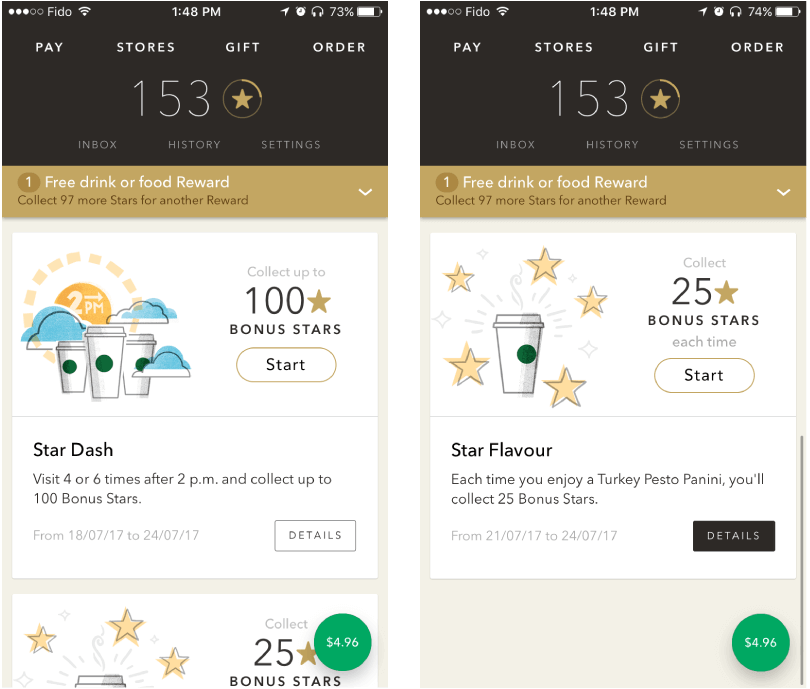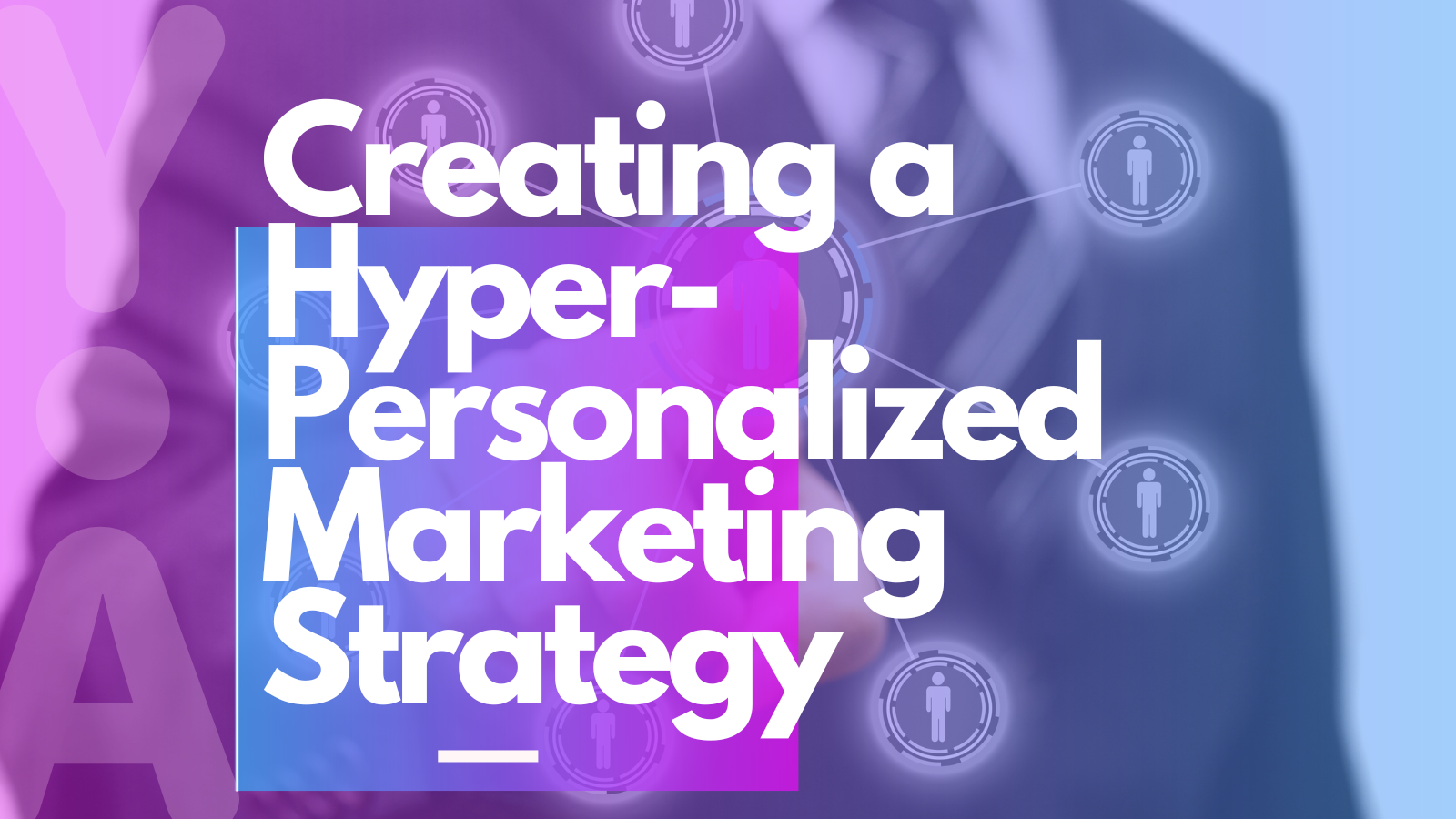In today’s crowded digital landscape, customer experience and personalization are critical components in capturing new users and retaining existing ones. In fact, 80% of customers are more likely to purchase from a company that offers personalized experiences. However, traditional personalization marketing models are becoming more outdated and less successful when it comes to building a relationship with your audience. Gone are the days in mobile app strategy where adding a user's first name to the beginning of a notification counts as “personalization”. Today, brands need to work harder to connect with users on a deeper level.
Hyper-personalization goes beyond the traditional personalization models and combines user behavior with AI technology and real-time data to create a customized message and marketing strategy. This marketing method shifts away from the one-size-fits-all strategy and aims to provide an individual experience for each customer.
Hyper-Personalization vs Traditional Personalization
It may seem like hyper-personalization and traditional marketing personalization have similar strategies, but there are several factors that set them apart. Personalization typically relies on basic user demographics such as name, age, gender, and location. Customers are then segmented into groups based on these demographics and served a personalized message. However, only 22% of consumers are satisfied with the level of personalization they receive from brands. Hyper-personalized marketing solves this problem by taking into account the individual behavior of the user – a “segment-of-one” approach.
For example, Starbucks has incorporated hyper-personalization marketing within their mobile apps strategy by leveraging their use of AI. They use real time data to send over 400,000 different variants of hyper-personalized marketing messages based on individual user behavior. The Starbucks app, using advanced AI technology, creates food and beverage suggestions personalized for each customer based on purchase history, tastes and preferences. This differs vastly from a traditionally personalized marketing strategy, where there might have only been a push for the customer to complete a generic coffee purchase.

Source: WebEngage
Hyper-personalization is also unique in that it takes the work and effort out of the customers’ hands. These marketing strategies tailor the customer journey and predict the customers’ needs. With AI technology, marketers can anticipate the desires of their customers and fulfill them before they can think of alternatives. With the increased amount of competition in the mobile landscape, this proactive communication can help retain users and create loyalty.
Implementing Hyper-personalized Marketing Strategy
A well executed hyper-personalization mobile app strategy can deliver eight times the return on investment on marketing spend and lift sales by 10% or higher. The trick is properly implementing this strategy correctly so that you aren’t spamming customers with unwanted messages.
Collecting User Data
The first step in implementing a hyper-personalization strategy is collecting user data. Make sure to ook beyond just the user’s attributes such as gender or age and dive into their in-app behaviors and past purchase data. Evaluatethe products they have viewed, what they have added into their cart, their average browsing time, and pastpurchases. These are all indicators of what can draw your user back into the app to complete your desired activity.
The more data you collect, the more hyper-personalized you can make your offers. This is where AI technology can be an extremely useful tool. Learning specific user behaviors can be difficult without the use of real-time data analytics and AI technology. By using these tools, you will be able to reach your target customers using hyper-personalized content at the exact right time. You can also use AI to create relevant customer recommendations based on previous behaviors, similar to how the Starbucks app would suggest drink or food orders to their users.
Creating a Hyper-personalized Marketing Content Strategy
After collecting and analyzing your user data, you can begin to develop a mobile app strategy to serve personalized content your users. This is where the fun begins! There are many different ways to use hyper-personalization to your app’s advantage when it comes to creative messaging and content creation.
Hyper-Personalized Marketing Recommendations
One way of using this marketing strategy to draw customers back into your app is to hyper-personalize user recommendations. For example, Amazon’s recommendation tool powers 35% of their total conversions. They use specific information such as search querrey history and past purchases to send targeted one-to-one emails with products that had just been viewed to entice users into making a purchase. This type of personalization goes beyond using location or names. Amazon is letting their users know that they are paying attention to their needs and creating an easy way for them to access what they’re looking for. Marketers can utilize the recommendation tool and send personalized messages to users regarding products they have just viewed to push them to make that final purchase.
Hyper-Personalized Marketing Push Notification Reminders
Another way to implement hyper-personalization is with push notifications. The Netflix app is a great example of this type of personalization. Netflix is all about providing a personalized viewing experience that tailors viewing recommendations to meet the needs of each individual. For example, when a new series comes out that a user has watched in the past, they will send a notification letting them know that the season is now available. This type of hyper-personalization drives a higher return of users, as they are enticed to view content that is specific to their preferences.
Customer Loyalty and Rewards
Using the data collection aspect of a hyper-personalization campaign also comes in handy when rewarding valuable, loyal users. When marketers see that certain users come back to the app on a daily or even weekly basis, they should reward that user to keep them coming back. Spotify does this by analyzing the music users are listening to, and sending them messaging of when a favorite artist is going to be performing close by. They also create custom campaigns from specific artists thanking users for listening to their music and giving them exclusive access to concerts. This one-to-one, hyper-personalized marketing encourages customer loyalty and increases retention within your app.
Takeaways of Creating a Hyper-Personalized Marketing Strategy
Customer experience and personalization are critical components to capturing new users and retaining existing ones with 80% of customers more likely to purchase from a company that offers personalized experiences. A hyper-personalized mobile app strategy goes beyond the traditional personalization models and combines user behavior data with AI technology and real-time information to create a customized message or marketing strategy. Here are three ways to use hyper-personalization in your app marketing strategy:
- Hyper-Personalized Marketing Recommendations: Hyper-personalize your recommendations to users. Amazon’s recommendation tool, for example, powers 35% of their total conversions. Marketers can utilize recommendations to send personalized messages with products they have just viewed to push them to make that final purchase.
- Hyper-Personalized Push Notification Reminders: Another way to implement hyper-personalization is with push notifications. For example, the Netflix app uses these notifications to send messages to users that a show they have been watching is coming out with a new season. This type of hyper-personalization drives a higher return of users, as they are receiving content that is specific to their preferences.
- Customer Loyalty and Rewards: Using the data collection aspect of a hyper-personalization campaign also comes in handy when rewarding valuable, loyal users. You can do this by analyzing which users come back to your app and give them exclusive access to discounts or new levels. This one-to-one, hyper-personalized marketing enhances customer loyalty and retention.

